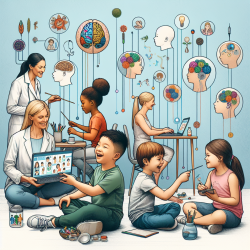Introduction to Brain-Computer Interface (BCI) Technology
Brain-Computer Interface (BCI) technology is an innovative field that aims to create a direct communication pathway between the brain and external devices. This technology has been primarily used for restoring lost functions in paralyzed patients by leveraging the brain's motor and sensorimotor systems. The BCI Competition IV has been a pivotal event in pushing the boundaries of this technology by challenging researchers to solve complex data analysis problems that arise in BCI research.
Relevance to Speech Language Pathology
While BCI technology is often associated with motor rehabilitation, its implications for speech therapy, especially for children, are profound. The ability to decode neural signals can provide insights into speech processing and production, potentially offering new avenues for therapy in children with speech and language disorders. The BCI Competition IV highlighted several challenges and solutions that can be adapted for improving speech therapy outcomes.
Key Insights from BCI Competition IV
- Data Analysis and Signal Processing: The competition emphasized the importance of robust data analysis techniques, such as common spatial pattern analysis, which could be adapted to analyze neural signals related to speech production.
- Handling Non-Stationarity: One of the challenges in BCI research is the non-stationarity of brain signals. Techniques developed to address this issue could be crucial in creating more stable and reliable speech therapy interventions.
- Real-Time Feedback: The competition underscored the need for real-time data processing, which is essential for providing immediate feedback in therapeutic settings, thereby enhancing the learning process for children.
Encouraging Further Research
The outcomes of the BCI Competition IV suggest several areas for further research that could benefit speech therapy:
- Exploring the application of BCI technology in real-time speech therapy sessions to provide instant feedback and adjust therapeutic strategies dynamically.
- Investigating the potential of BCI to assist in diagnosing speech disorders by analyzing brain activity patterns associated with speech production and comprehension.
- Developing adaptive algorithms that can accommodate the variability in children's brain signals to enhance the effectiveness of speech therapy interventions.
Conclusion
BCI technology offers exciting possibilities for enhancing speech therapy outcomes for children. By integrating insights from the BCI Competition IV, speech-language pathologists can develop more effective, data-driven therapeutic strategies that cater to the unique needs of each child. Continued research and collaboration between neuroscientists and speech therapists will be crucial in unlocking the full potential of BCI technology in this field.
To read the original research paper, please follow this link: Review of the BCI Competition IV.










